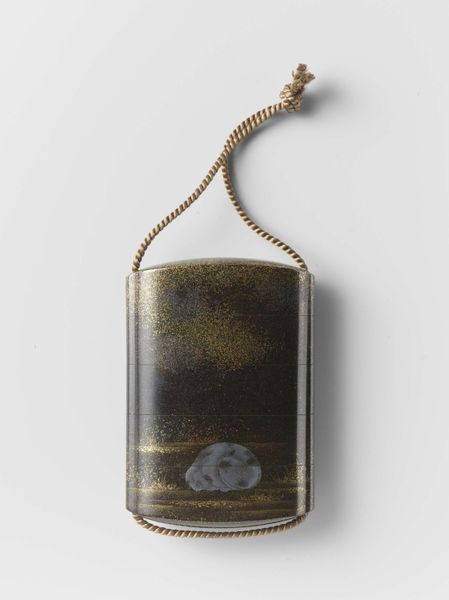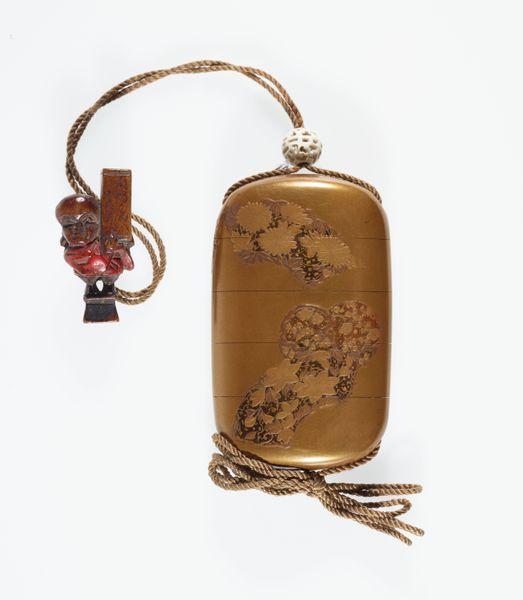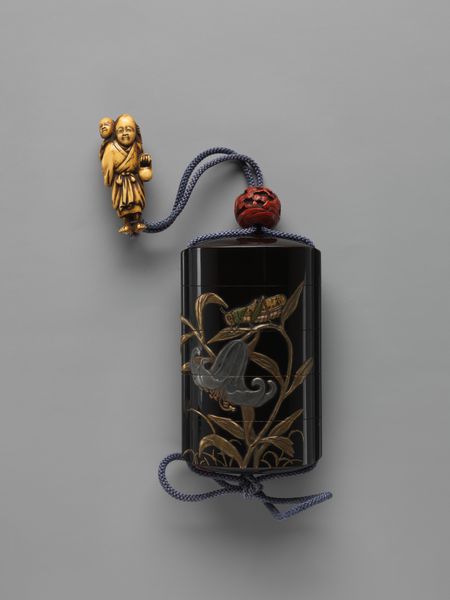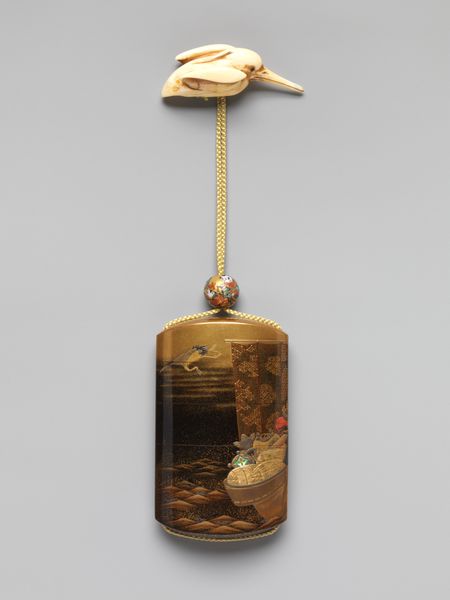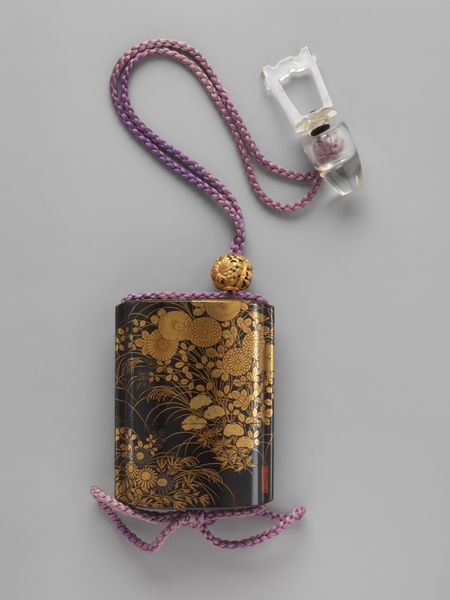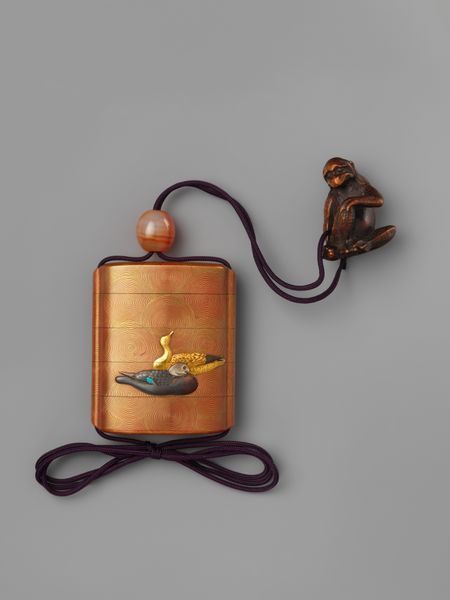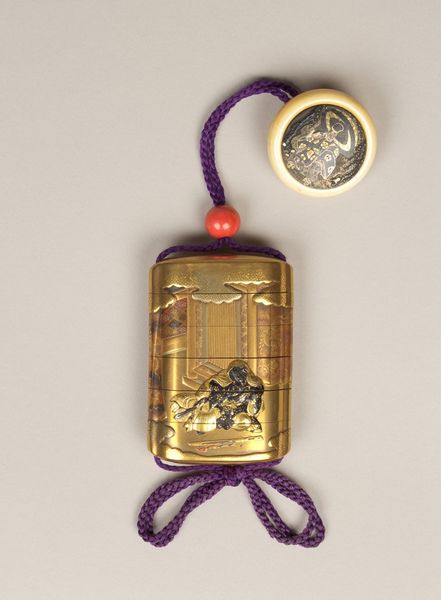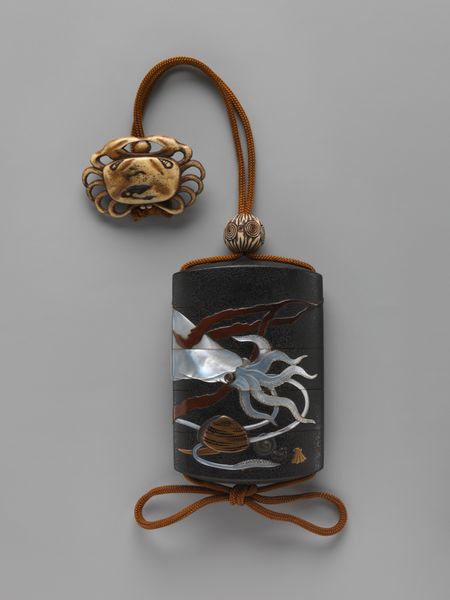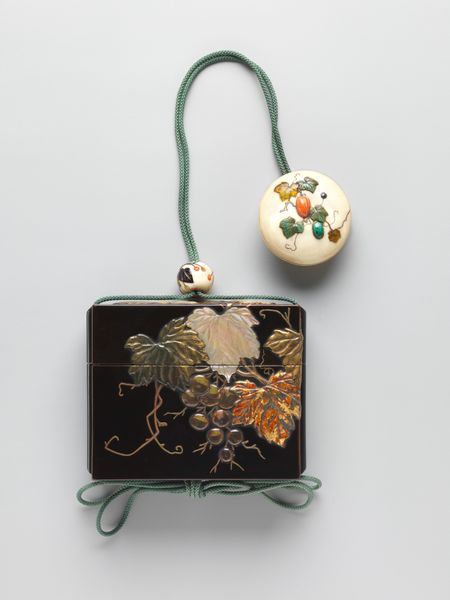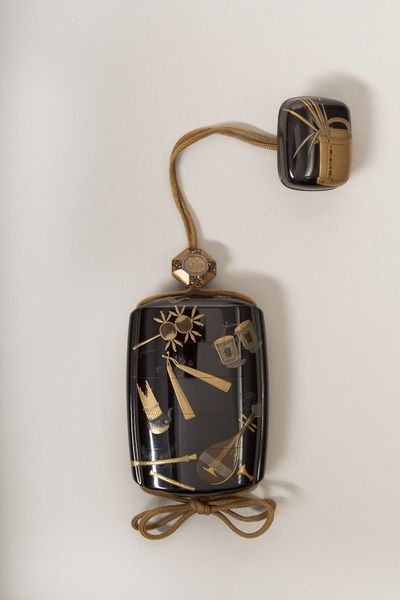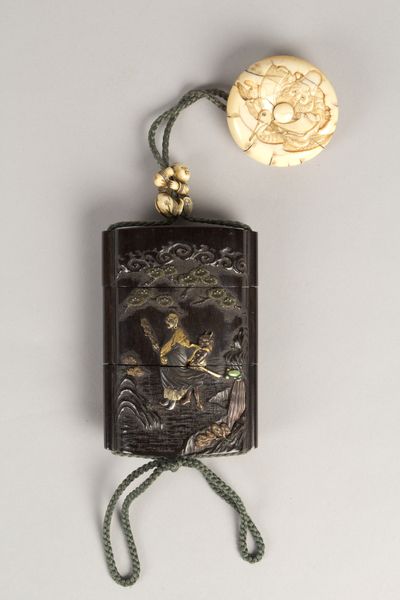
ornament, metal, textile, guilding, wood
#
ornament
#
metal
#
asian-art
#
textile
#
guilding
#
wood
#
decorative-art
#
miniature
Dimensions: height 10.5 cm, depth 2.7 cm, width 5.0 cm
Copyright: Rijks Museum: Open Domain
This is an Inro, a Japanese case made by Shiomi Masanari in the late 17th or early 18th century, crafted with lacquer and gold. Now, lacquer isn't just paint; it's a painstaking process. Multiple layers are applied, each dried and polished. Here, the Inro features a design of bamboo in gold, achieved through the *maki-e* technique, where gold powder is sprinkled onto wet lacquer. The work is meticulous, demanding control and patience. Consider the cultural context: Inro were worn suspended from the obi, a sash around the waist, to hold personal seals or medicines. They were essentially a fashion accessory for men, displaying their taste and status. The choice of bamboo is also significant, symbolizing resilience and flexibility in Japanese culture. Looking closely, we see that the high level of craftsmanship elevates a functional object to an art form. This Inro challenges our notions of craft versus art, reminding us that skill, material knowledge, and cultural meaning intertwine in the most unexpected objects.
Comments
No comments
Be the first to comment and join the conversation on the ultimate creative platform.
